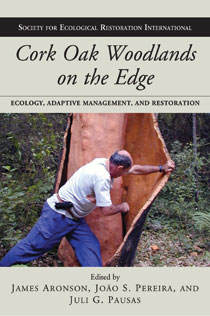"This book brings together the best of the ecological and social sciences to assess the condition of an iconic ecosysytem of the western Mediterranean world, with results as useful and beautiful as the cork oak itself."
J.R. McNeill, Georgetown University, author of "Something New Under the Sun "
"Cork oak forests have coevolved with human societies for thousands of years. They support the livelihoods of millions of people and are a key component of treasured Mediterranean landscapes, but the pressures on these forests have never been greater. This scholarly work offers a wealth of knowledge on the management and restoration of a critical forest system and contains much of significance to those concerned with our relationship to all forests worldwide."
Jeff Sayer, science advisor, IUCN
"Cork Oak Woodlands on the Edge provides a broad introduction to a vanishing cultural landscape. Cork oak woodlands are rich in species and also in traditional knowledge and lessons for understanding and coping with global change."
Fernando Valladares, Instituto de Recursos Naturales, CSIC, and Rey Juan Carlos University, Madrid
"This comprehensive account of Mediterranean cork oak trees and the cultural landscapes they have dominated for millennia reveals much about ecology, management, history, and culture. The contributors represent an international group of researchers and managers engaged in exploring and restoring these emblematic ecosystems."
Francis E. Putz, Department of Biology, University of Florida
"[Cork Oak Woodlands on the Edge] is well written, technical and scientifically sound and, being very comprehensive, gives the reader a complete picture of the problem. I think this book is a must for all people interested in climate change and restoration of ecosystems. By reading this you will understand the importance of the use of cork products; that is, the economic importance of such products for the producer countries who have a considerable workforce allocated to this activity."
International Journal of Environmental Studies

